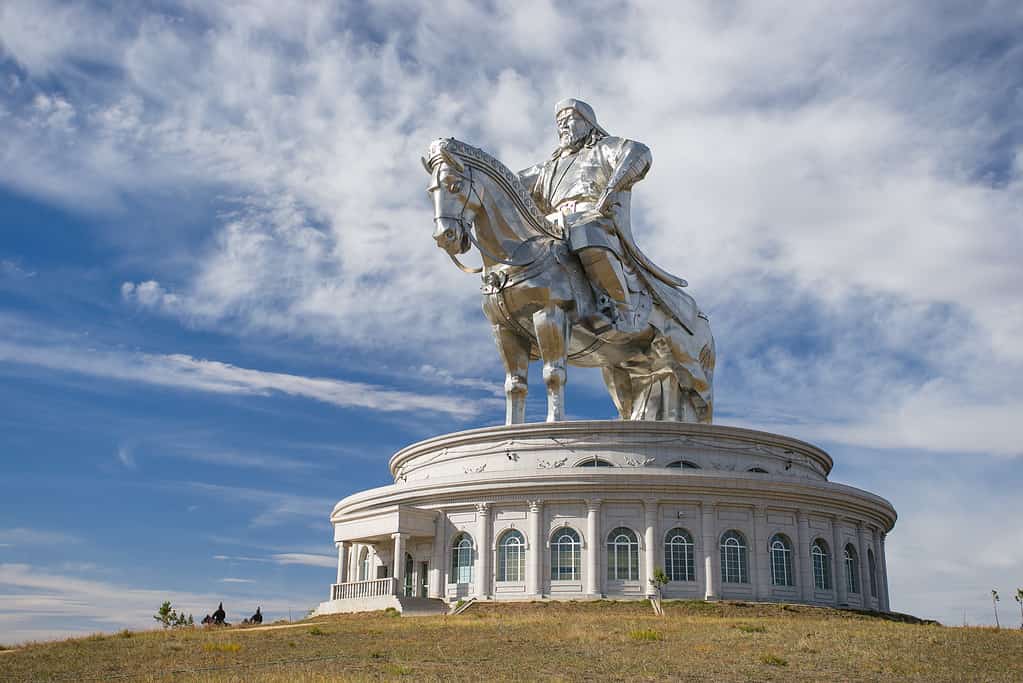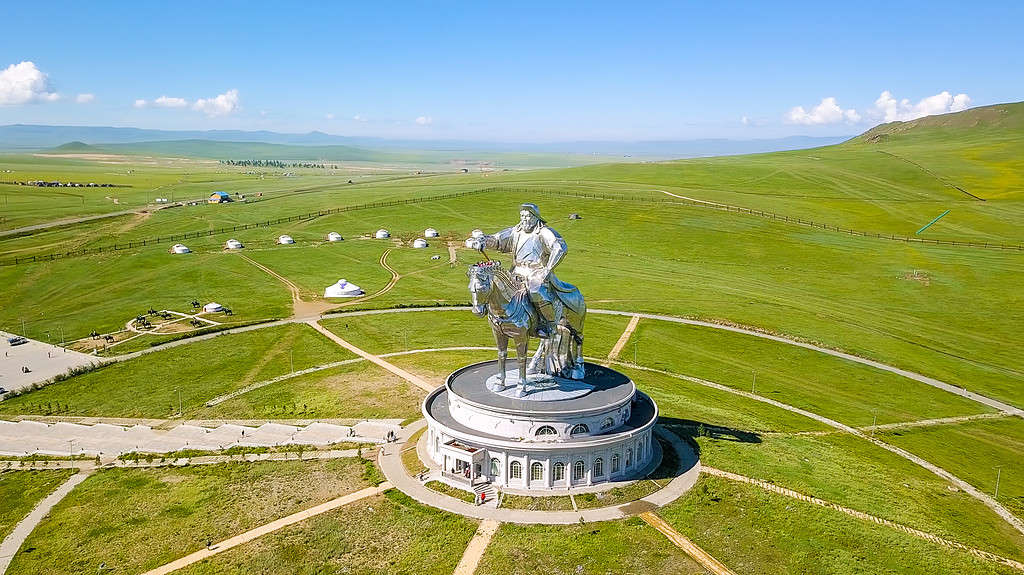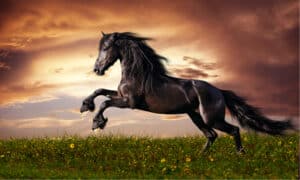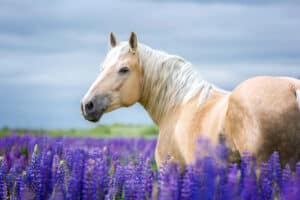If you’re a monumental art and history fan, the Genghis Khan Equestrian Statue in Mongolia is a must-visit. This is the world’s tallest equestrian statue at a towering 131 feet. It symbolizes the Mongolian Empire’s strength, power, and resilience. In this article, we’ll explore the history and significance of the Genghis Khan Equestrian Statue and what visitors can expect when they visit the statue complex.
The Impact of the Largest Horse Statue in the World
The Genghis Khan Equestrian Statue and the encompassing complex have become renowned tourist destinations in Mongolia, drawing in visitors worldwide. The statue’s cultural and historical significance and impressive size and design have helped boost tourism in the region. In this section, we’ll explore how the statue has impacted tourism in Mongolia.
Since its opening in 2008, the Genghis Khan Equestrian Statue complex has attracted thousands of visitors yearly. According to reports, the complex attracts around 250,000 tourists annually, increasing yearly. The statue has become a popular attraction for domestic and international tourists, making it one of the most visited sites in Mongolia.

The Genghis Khan Equestrian Statue in Mongolia is the world’s tallest equestrian statue at 131 feet.
©Strelyuk/Shutterstock.com
Economic Benefits of the Largest Horse Statue in the World
The Genghis Khan Equestrian Statue has also significantly impacted the local economy, providing jobs and boosting the tourism industry. The statue’s construction and the surrounding complex generated employment opportunities for the locals. This project provided over 200 individual jobs during its construction.
The complex’s tourism-related activities, including the yurt village, horse riding, archery, and the shooting range, have created new job opportunities for the locals. The complex’s expansion has also led to developing hotels, restaurants, and other tourist attractions in the surrounding area, boosting the local economy.
The statue’s economic impact is not just limited to the surrounding area. The statue has helped boost Mongolia’s tourism industry, which significantly contributes to the country’s economy. According to the World Travel & Tourism Council, tourism, directly and indirectly, supports 157,500 jobs in Mongolia, accounting for 5.6% of the country’s GDP.
Cultural Significance
The Genghis Khan Equestrian Statue is more than just a tourist attraction; it symbolizes Mongolian culture and identity. The statue symbolizes the might, potency, and tenacity of the Mongolian Empire and its citizens, which is an integral part of Mongolia’s cultural legacy.
The museum located in the statue complex plays a crucial role in preserving Mongolia’s cultural heritage by showcasing exhibits related to the archaeological cultures of the Bronze Age, Xiongnu, and the Great Khan era spanning the 13th and 14th centuries.
The Genghis Khan Equestrian Statue and the surrounding complex symbolize Mongolian unity and identity, attracting visitors interested in learning about the country’s rich history and culture.

The Genghis Khan Equestrian Statue symbolizes Mongolian culture and identity.
©Maykova Galina/Shutterstock.com
What Visitors Can Expect
When you visit the Genghis Khan Equestrian Statue complex, you can enjoy exploring the museum, recreation center, and surrounding area. The museum has exhibitions that feature the Xiongnu and Bronze Age archaeological cultures from Mongolia. These displays include everyday items like belt buckles, knives, utensils, sacred animals, and more. Visiting the museum will leave a memorable impression on you.
The second exhibition is dedicated to the Great Khan period in the 13th and 14th centuries, showcasing goldsmith subjects, ancient tools, and some Nestorian rosaries and crosses. The museum is an excellent opportunity to learn about Mongolian history and culture.
Visitors can also explore the tourist and recreation center, covering 212 hectares or 520 acres. The center has a variety of activities, including horse riding, archery, and a shooting range. Visitors can also enjoy traditional Mongolian food and drinks and stroll through the yurt village surrounding the main statue area.
When visiting the statue, wear comfortable shoes and clothing suitable for the weather conditions. You will also need to pay an admission fee to enter the statue complex. You can purchase your ticket at the entrance or book it in advance.
The Genghis Khan Equestrian Statue is a unique and powerful symbol of Mongolian culture, attracting visitors from all around the world. It’s an excellent opportunity for travelers to learn more about Mongolia’s cultural heritage and explore its natural beauty. One thing is certain: visiting the Genghis Khan Equestrian Statue complex will be an unforgettable experience.
Where is Mongolia Located on a Map?
Mongolia, a country situated between China and Russia, is renowned for its expansive and rugged landscapes, as well as its nomadic traditions. The capital city, Ulaanbaatar, is centered around Chinggis Khaan (Genghis Khan) Square, named after the renowned founder of the Mongol Empire during the 13th and 14th centuries.
Ulaanbaatar is also home to notable attractions such as the National Museum of Mongolia, which exhibits historical and ethnographic artifacts, and the beautifully restored Gandantegchinlen Monastery, dating back to 1830.
Here is Mongolia on a map:
Conclusion
If you’re ever in Mongolia, don’t miss out on visiting the Genghis Khan Equestrian Statue. It’s a remarkable monument that showcases the strength, power, and resilience of the Mongolian Empire. As an emblem of history and culture, it represents the innate human need to create impressive and grand structures. Visiting this statue complex should be an essential part of your itinerary, and it’s bound to be a cherished experience that you’ll remember for life.
The photo featured at the top of this post is © Alexandru Nika/Shutterstock.com
Thank you for reading! Have some feedback for us? Contact the AZ Animals editorial team.






